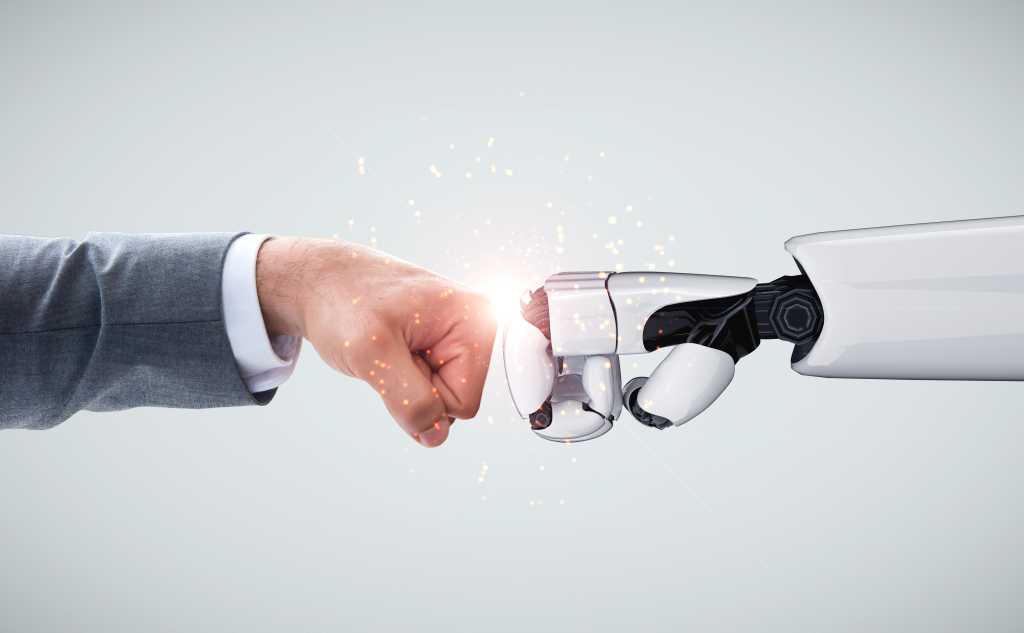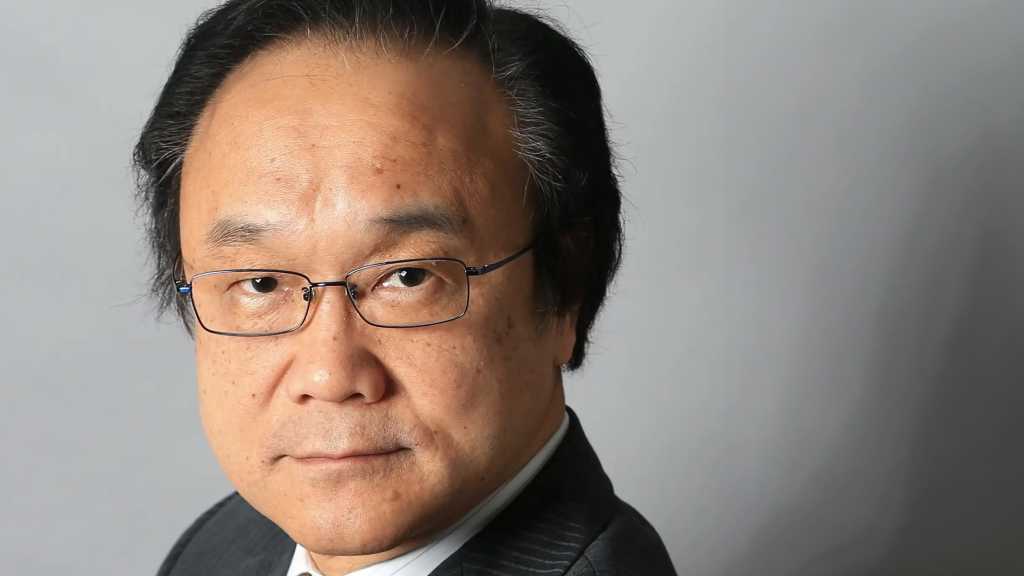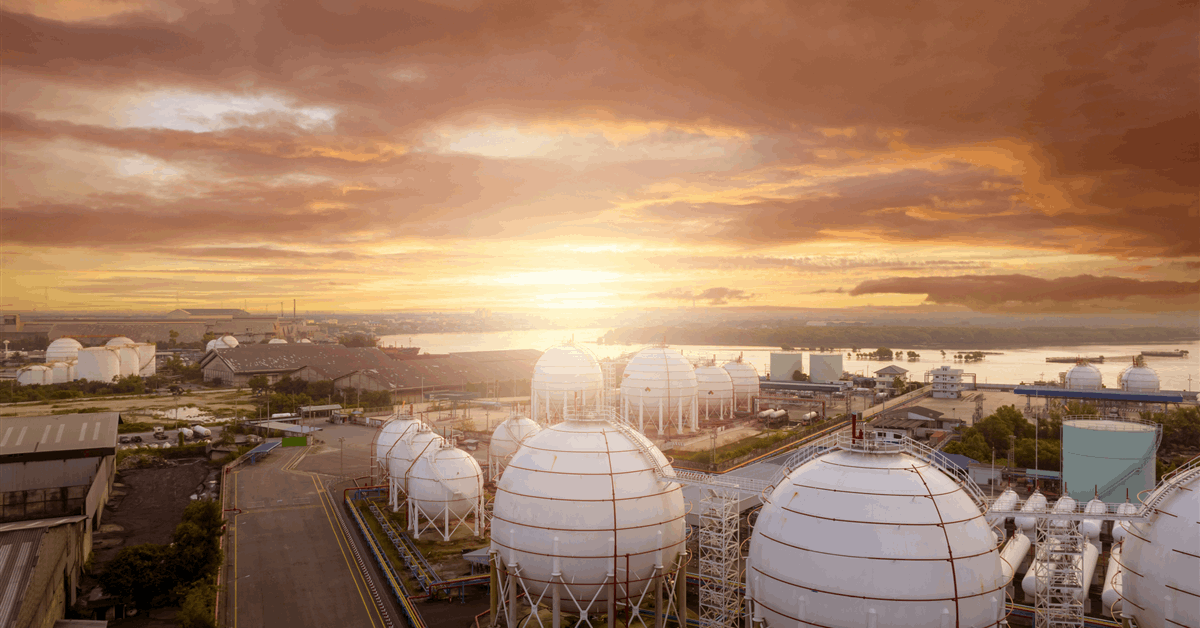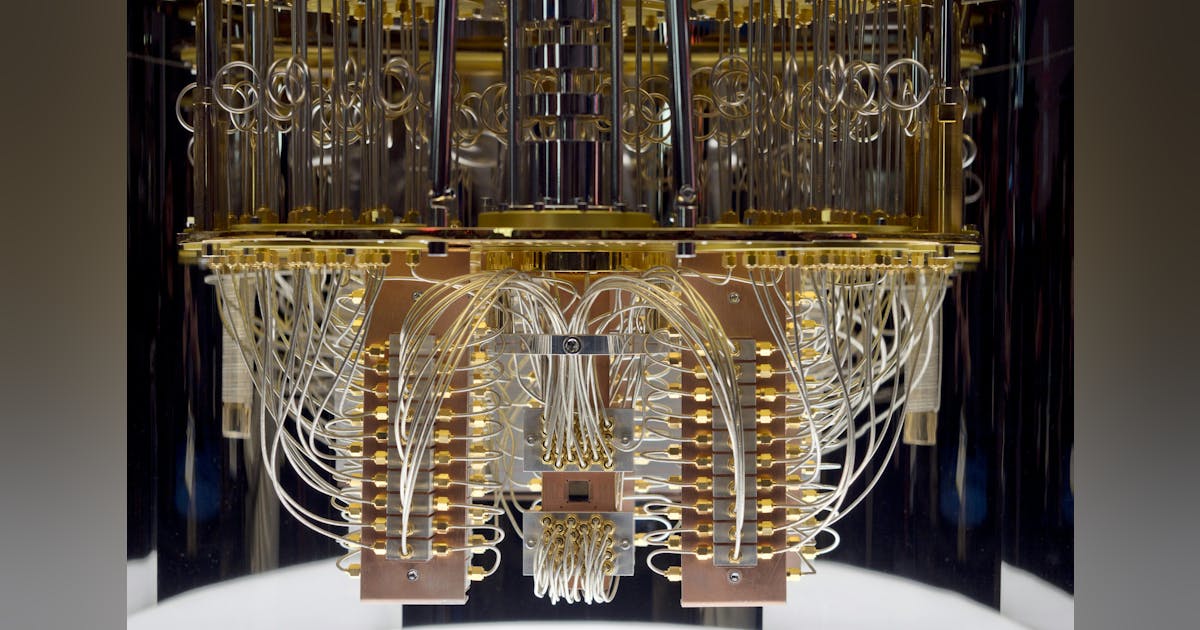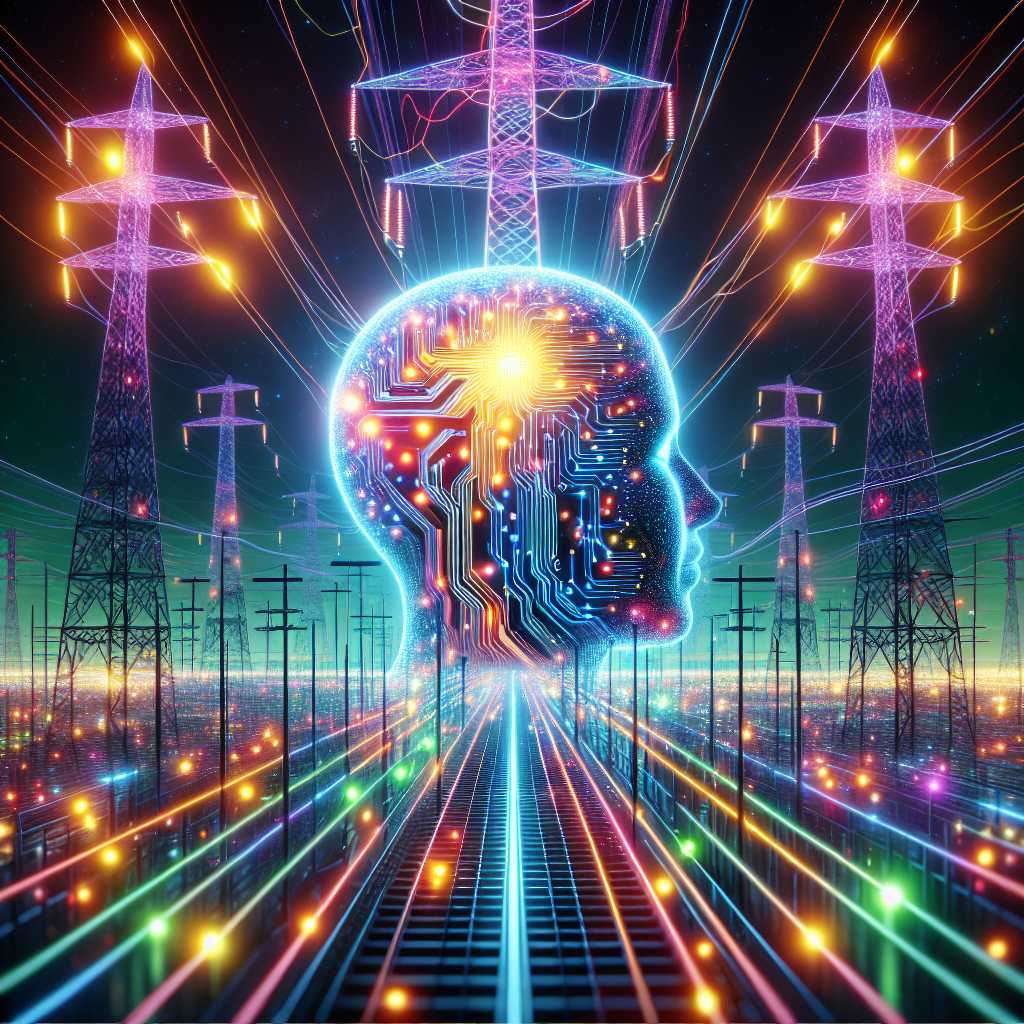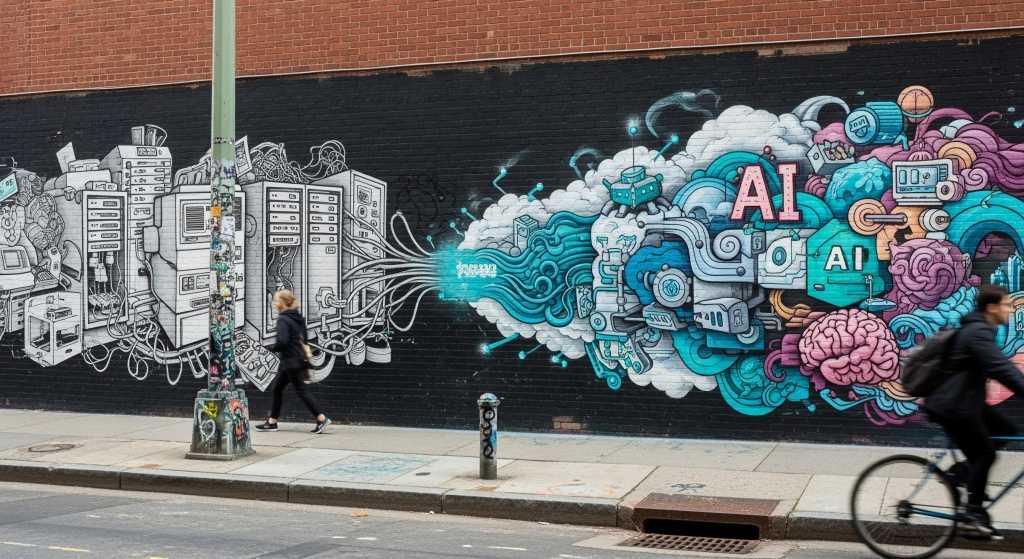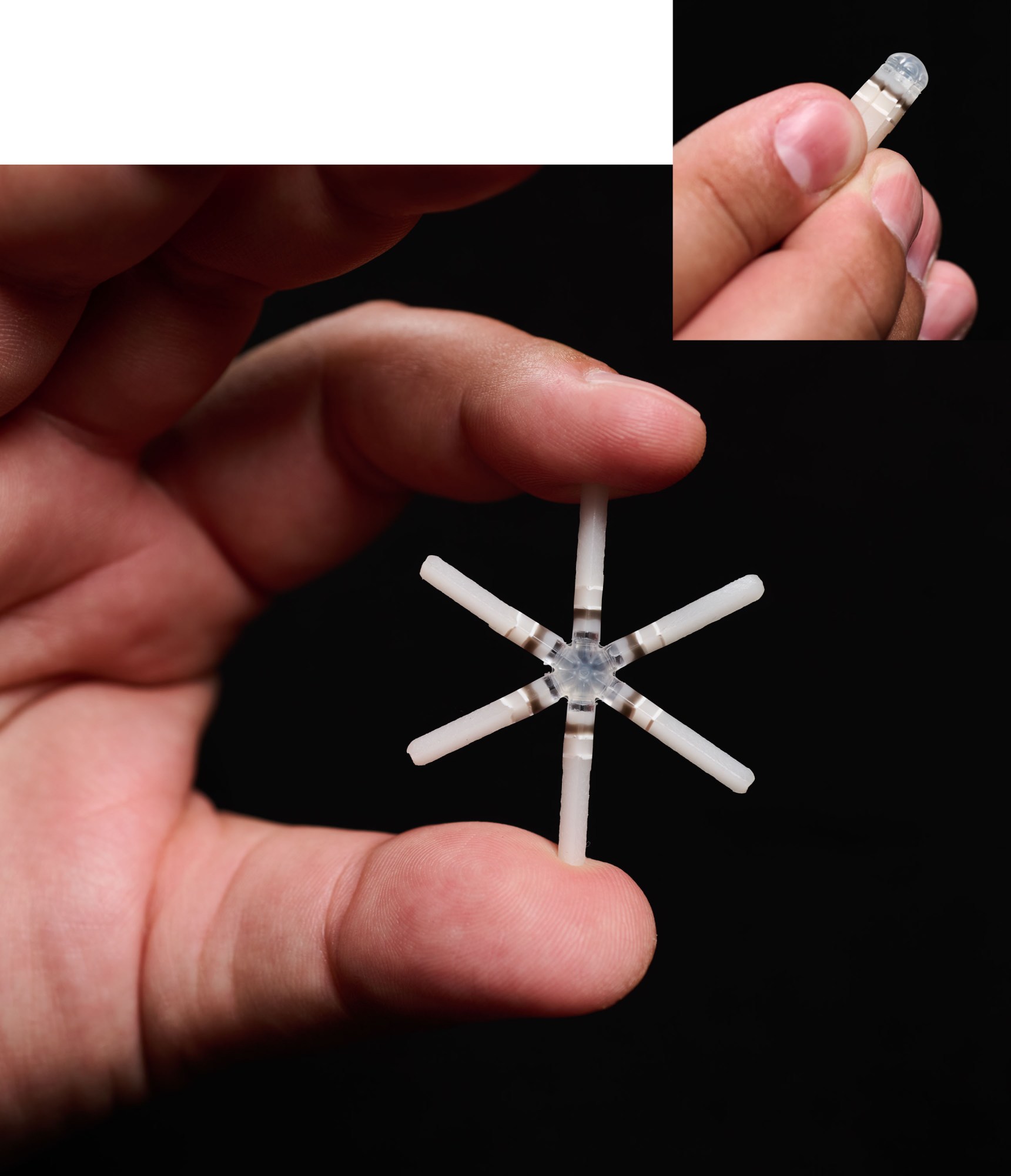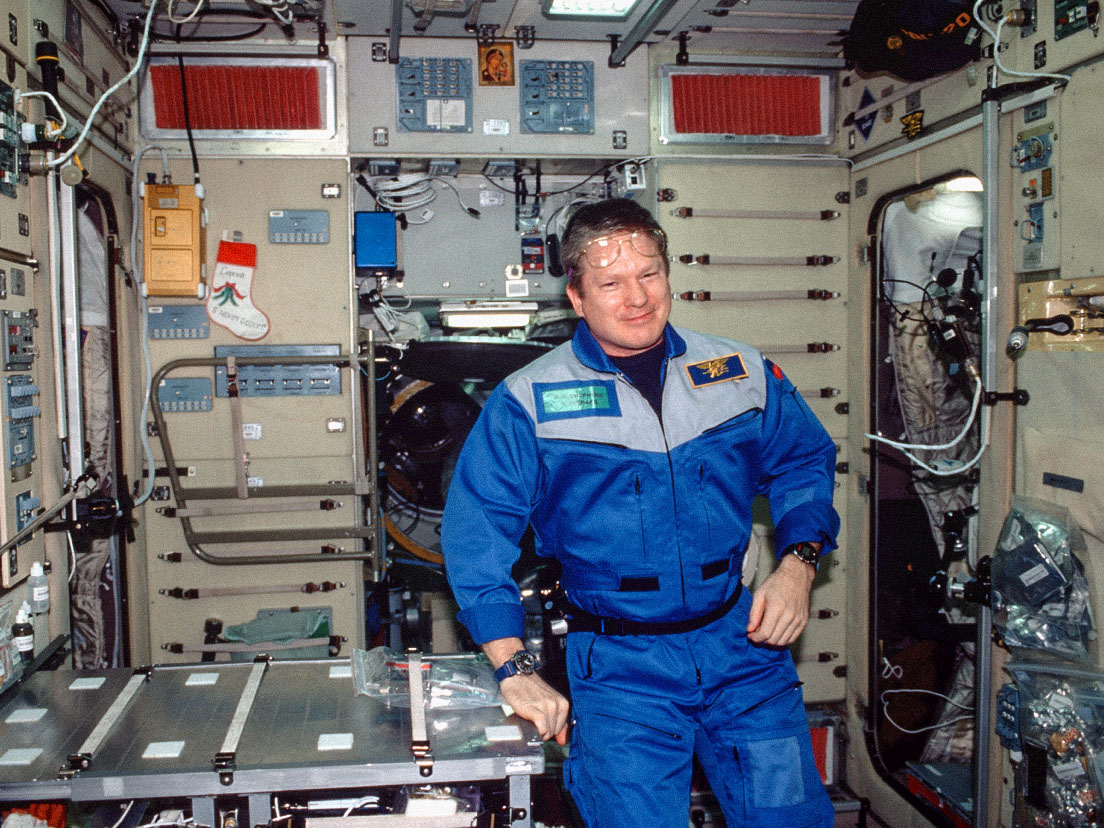When the Palestinian stem-cell scientist Jacob Hanna was stopped while entering the US last May, airport customs agents took him aside and held him for hours in “secondary,” a back office where you don’t have your passport and can’t use your phone. There were two young Russian women and a candy machine in the room with him. Hanna, who has a trim beard and glasses and holds an Israeli passport, accepted the scrutiny. “It’s almost like you are under arrest, but in a friendly way,” he says. He agreed to turn over his phone and social media for inspection.
“They said, ‘You have the right to refuse,’” he recalls, “and I said, ‘No, no, it’s an open book.’”
The agents scrolling through his feeds would have learned that Hanna is part of Israel’s small Arab Christian minority, a nonbinary LGBTQ-rights advocate, and an outspoken critic of the Gaza occupation, who uses his social media accounts to post images of atrocities and hold up a mirror to scientific colleagues including those at the Weizmann Institute of Science, the pure-science powerhouse where he works—Israel’s version of Caltech or Rockefeller University. In his luggage, they would have found his keffiyeh, or traditional headscarf, which Hanna last year vowed to wear at lecture podiums on his many trips abroad.
Hanna had been stopped before; he knew the routine. Anything to declare? Any biological samples? But this time the agents’ questions touched on a specific new topic: embryos.
Weeks earlier, a Harvard University researcher had been arrested for having frog embryos in her luggage and sent to a detention center in Louisiana. Hanna didn’t have any specimens from his lab, but if he had, it would have been surprisingly hard to say what they were. That’s because his lab specializes in creating synthetic embryo models, structures that resemble real embryos but don’t involve sperm, eggs, or fertilization.
Instead of relying on the same old recipe biology has followed for a billion years, give or take, Hanna is coaxing the beginnings of animal bodies directly from stem cells. Join these cells together in the right way, and they will spontaneously attempt to organize into an embryo—a feat that’s opening up the earliest phases of development to scientific scrutiny and may lead to a new source of tissue for transplant medicine.
Soon it could be difficult to distinguish between a real human embryo—the kind with legal protections—and one conjured from stem cells.
In 2022, working with mice, Hanna reported he’d used the technique to produce synthetic embryos with beating hearts and neural folds—growing them inside small jars connected to a gas mixer, a type of artificial womb. The next year, he repeated the trick using human cells. This time the structures were not so far developed, still spherical in shape. Nonetheless, they were incredibly realistic mimics of a two-week-old human embryo, including cells destined to form the placenta.
These sorts of models aren’t yet the same as embryos. It’s rare that they form correctly—it takes a hundred tries to make one—and they skip past normal steps before popping into existence. Yet to scientists like the French biologist Denis Duboule, Hanna’s creations are “entirely astonishing and very disturbing.” Soon, Duboule expects, it could be difficult to distinguish between a real human embryo—the kind with legal protections—and one conjured from stem cells.
Hanna is the vanguard of a wider movement that’s fusing advanced methods in genetics, stem-cell biology, and still-primitive artificial wombs to create bodies where they’ve never grown before—outside the uterus. Joining the chase are researchers at Caltech, the University of Cambridge, and Rockefeller in New York, as well as a growing cadre of startup companies with commercial aims. There’s Renewal Bio, a startup Hanna cofounded, which hopes to grow synthetic embryos as a source of youthful replacement cells, such as bits of liver or even eggs. In Europe, Dawn Bio has started placing a type of embryo model called a blastoid on uterine tissue. That will light up a pregnancy test and could, the company thinks, provide new insights into IVF medicine. Patent offices in the US and Europe are seeing a flood of claims as universities grasp for exclusive commercial control over these new types of beings.
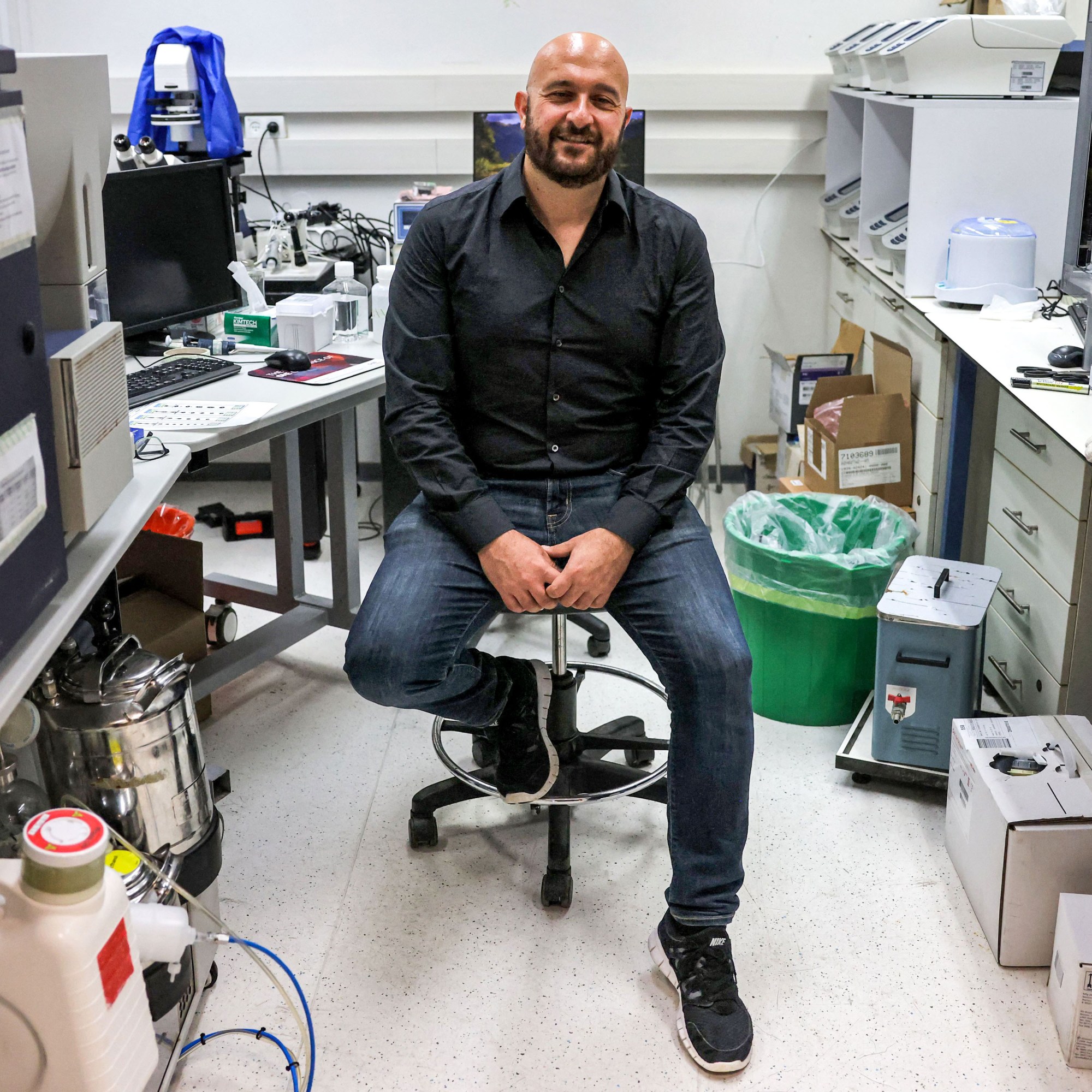
Hanna declined a request to discuss his research for this story. But for the last three years, MIT Technology Review has followed Hanna across online presentations, lecture halls, and two in-person ethics meetings, both organized by the Global Observatory for Genome Editing, a public consultation project where he agreed to engage with religious scholars, bioethicists, and other experts. What emerged is a remarkable picture of a scientist working at a Nobel Prize level but whose research, though approved by his institution, raises serious long-term ethical questions.
Exactly how far Hanna has taken his models of the human embryo is an open question. According to public comments from Renewal Bio, the answer is at least 28 days. But it’s possibly further. One scientist in contact with the company said he thought they’d reached close to day 40, a point where you would see the beginning of eyes and budding limbs. Renewal did not respond to a request for comment.
But even if he hasn’t gotten that far yet, Hanna intends to. His team is “trying to make entities at more advanced stages—depending on the goal, it could be day 30 in development, day 40, or day 70,” he told an audience last May in Cambridge, Massachusetts, where he’d traveled to join a panel discussion involving religious scholars and social scientists at the Global Observatory’s annual summit. The more advanced versions would be similar in size and development to a fetus in the third month of pregnancy.
O. Carter Snead, a bioethicist from the University of Notre Dame who led the panel featuring Hanna, approached me afterward to ask if I’d heard what the scientist had said. Snead was surprised that Hanna had so frankly disclosed his goals and that no one had objected, or maybe even grasped what it meant. Perhaps, Snead thinks, this technology won’t sink in until people can see it with their own eyes. “If you had one of these spinning bottles with something that looked like a human fetus inside it, I think you’d get people’s attention,” he says. “That’s going to be like, whoa—what are we doing?”
Snead, a Catholic who sits on a panel that advises the Vatican, also was not comforted by Hanna’s plan to make sure his models, if they advance to later stages of development, will pass ethical scrutiny. That plan involves blocking the formation of the head, brain, or perhaps heart of the synthetic structures, by means including genetic modification. If there’s no brain, Hanna’s reasoning goes, there’s no awareness, no person, and no foul. Just a clump of organs.
Snead says that’s not the same standard of humanity he knows, which treats all humans the same, regardless of their intellectual capacity or anything else. “What is considered human? Who is considered human?” wonders Snead. “It’s who’s in and who’s out. There is a dramatic consequence of being in versus out of the boundaries of humanity.”
The beginnings of bodies
Each of us—me, you the reader, and Jacob Hanna—started as a fertilized egg, a single cell that’s able to divide and dynamically carry out a program to build a complete body with all its organs and billions of specialized cells. Science has long sought ways to seize on that dramatic potential. A first step came in the 1990s, when scientists were able to isolate powerful stem cells from five-day-old embryos created through in vitro fertilization—and keep them growing in their labs. These embryonic stem cells had the inherent potential to become any other type of cell. If they could be directed in the lab to form, for example, neurons or the insulin-making cells that diabetics need, that would open up a way to treat disease using cell transplants.
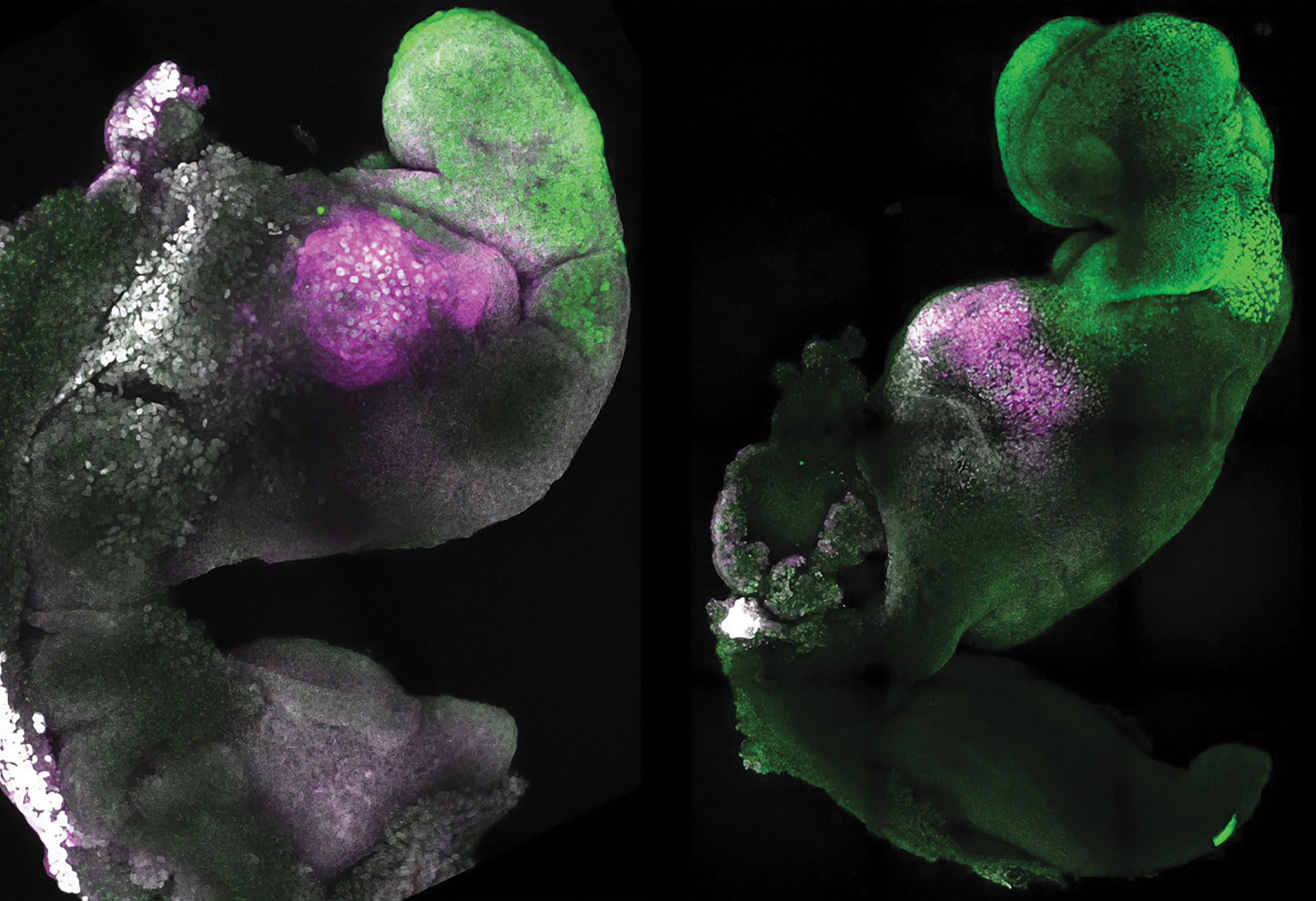
But these lab recipes are often unsuccessful, which explains the general lack of new stem-cell treatments. “The sad truth is that over 25 years that we’ve been working on this problem, there are about 10 cell types you make that have reasonable function,” says Chad Cowan, chief scientific officer of the stem-cell company Century Therapeutics. If we think of the body as a car, he explains, “we’ve got only spark plugs. We maybe have some tires.” The body’s most potent blood-forming cells in particular “never appear,” according to Cowan, even though biotech companies have spent millions trying to make them.
Hanna’s startup plans to use synthetic embryos as a kind of “bioprinter,” producing medically valuable cells in cases where other methods have failed.
It turns out, though, that stem cells retain a natural urge to work together. Scientists began to notice that, when left alone, the cells would join into blobs, tubes, and cavities—some of which resembled parts of an embryo.
Early versions of these structures were crude, even just a swirling film of cells on a glass slide. But each year, they have grown more realistic. By 2023, Hanna was describing what he called a “bona fide” human embryo model that was “fully integrated,” with all the major parts arranged in an architecture that was hard to distinguish from the real thing.
His company, Renewal, plans to use these synthetic embryos as a kind of “bioprinter,” producing medically valuable cells in cases where other methods have failed. This could be particularly valuable if the synthetic embryos are a perfect match with a patient’s DNA. And that’s possible too: These days reprogramming anyone’s skin cells into stem cells is easily done. Hanna has tried it on himself, transforming his own cells into synthetic embryos.
Hanna’s research, and that of other groups, has at times collided with a powerful scientific body called the International Society for Stem Cell Research, or ISSCR, a self-governance organization that sets boundaries about what research can and can’t be published and what terminology to use. That’s to shield scientists from sensational headlines, public backlash, or the reach of actual regulators.
The organization has taken a particularly categorical position on structures made from stem cells, saying they are mere “models.” According to a statement it fired off in 2023, “embryo models are neither synthetic nor embryos”—and, it added, they “cannot and will not develop to the equivalent of postnatal stage human.”
Many scientists, including Hanna, agree no one should ever try to make a stem-cell baby. But he is fairly certain these structures will become more realistic and can grow further. In fact, that may be the real test of what an embryo is: whether it can dynamically keep reaching new stages of development, especially organogenesis, or the first emergence of organs. The language in the ISSCR statement, he complained, was “brainwashing.”
Replacement parts
Most of the commercial projects involving synthetic embryos are doomed to a short and fitful life as the technology proves too difficult or undeveloped. But the idea isn’t going away. Instead, there are signals it’s getting bigger, and weirder. In an editorial published in March by MIT Technology Review, a group of Stanford scientists put forward a proposal for what they called “bodyoids,” arguing that stem cells and artificial wombs may lead to an “unlimited source” of nonsentient human bodies for use in drug research or as organ donors. One of its authors, Henry Greely, among the foremost bioethicists in the US, posted on Bluesky that even though the idea gives him “some creeps,” he added his name because he feels it is plausible enough to need discussion, and “soon.”
Especially in the Bay Area, headless bodies are having a moment. The Stanford biologist Hiro Nakauchi, another “bodyoids” author, said the editorial provided a surprise entrée for him into a world of stealth startups already pursuing synthetic embryos, artificial wombs, and body-part “replacement.” He met the CEO of Hanna’s company, signing on as an advisor. But other teams have still more radical plans. One venture capitalist introduced him to a longevity entrepreneur tinkering with a plan for head transplants. The idea: Swap your aged head onto the body of a younger clone. That company claims to have a facility on a Caribbean island “just like Jurassic Park,” Nakauchi says.
These sorts of plans—real or rumored—have gotten the attention of the stem-cell police, the ISSCR. This June, an ethics committee led by Amander Clark, a fetal specialist at UCLA and a past president of the society, wrote that it had become aware of “commercial and other groups raising the possibility of building an embryo in vitro” and bringing it to viability inside “artificial systems.” Though the ISSCR had previously decreed that embryo models “cannot and will not” develop to term, it now declared efforts aiming at viability “unsafe and unethical,” placing them in a “prohibited” category. It added that the ban would cover “any purpose: reproductive, research, or commercial.”
Blurred boundaries
Clark and her colleagues are right that, for the foreseeable future, no one is going to decant a full-term baby out of a bottle. That’s still science fiction. But there’s a pressing issue that needs to be dealt with right now. And that’s what to do about synthetic embryo models that develop just part of the way—say for a few weeks, or months, as Hanna proposes.
Because right now, hardly any laws or policies apply to synthetic embryos. One reason is their unnatural origin: Because these entities don’t start with conception and grow in labs, most existing laws won’t cover them. That includes the Fetus Farming Prohibition Act, legislation passed unanimously in 2006 by the US Congress, which sought to prevent anyone from growing a fetus for its organs. But that law references “a human pregnancy” and a “uterus”—and there would be neither if a synthetic embryo were grown in a mechanical vessel.
Another policy under pressure is the “14-day rule,” a widely employed convention that natural embryos should not be grown longer than two weeks in the lab. Though it’s a mostly arbitrary stopping point, it’s been convenient for laboratory scientists to know where their limit is. But that rule isn’t being applied to the embryo models. For instance, even though the United Kingdom has a 14-day rule enshrined in law, that legislation doesn’t define what an embryo is. To scientists working on models, that’s a critical loophole. If the structures aren’t considered true embryos, then the rule doesn’t apply.
Last year, the University of Cambridge, in the UK, described the situation as a “grey area” and said it “has left scientists and research organisations uncertain about the acceptable boundaries of their work, both legally and ethically.”
Researchers at the university, which is a hot spot for human embryo models, have been working with one that has advanced features, including beating heart cells. But the appearance of distinctive features under their microscopes is unsettling—even to scientists. “I was scared, honestly,” Jitesh Neupane, who led that work, told the Guardian in 2023. “I had to look down and look back again.”
That particular stem-cell model isn’t complete—it entirely lacks placenta cells and a brain. So it’s not a real embryo. But it could get ever trickier to insist the models don’t count, given the accelerating race to make them more realistic. To Duboule, scientists are caught in a “fool’s paradox” and a “rather unstable situation.”
Even incomplete models raise the question of where to draw the line. Should you stop when it can feel pain? When it’s just too human-looking for comfort? Scientific leaders may soon have to decide if there are “morally significant” human features—like hands or a face—that should be avoided, whether the structure has a brain or not. “I personally think there should be regulation, and many in the field believe this too,” says Alejandro De Los Angeles, a stem-cell biologist affiliated with the University of Central Florida.
“I always live in fear that I might find myself embroiled in some kind of a scandal … Things can shift very quickly for political reasons.”
Jacob Hanna
Hanna says he has all the necessary approvals in Israel to carry his work forward. But he also worries that the ground rules could change. “I’m almost the only one [in Israel] doing these kinds of experiments, and I always live in fear that I might find myself embroiled in some kind of a scandal,” he says. “Things can shift very quickly for political reasons.”
And his statements about the situation in Gaza have made him a target. He’s gotten voicemails wondering why a Weizmann professor is so sympathetic to Palestine, and once when he returned from a trip, someone had tucked an Israeli army beret into the door handle of his car. Last year, he says, political opponents even went after his science by filing a complaint that his research was illegal.
What is clear is that Hanna, who is gregarious and attentive, has worked to cultivate a large group of friends and allies, including religious authorities—all part of a campaign to explain the science and hear out other views. He says he got a perfect grade in a bioethics class with a rabbi, conferenced with a priest from his hometown in Galilee, and even paid his respects to an Orthodox professor at a conservative hospital in Jerusalem. “It was unofficial. I didn’t have to get a permit from him,” Hanna says. “But … what does he think? Can I get him on board? Do I get a different opinion?”
“I really do think it’s admirable that he is willing to ask these hard questions about what it is that he’s doing. I think that makes him different,” says Snead. “But if you are cynical, you could ask if his focus on the ethical dimension of this is more of a branding exercise.” Perhaps, Snead says, it’s a way to market the structures as the “green, sustainable alternative to embryos.”
A heartbeat in a jar
To admirers, Hanna is a doctor and researcher “heads above the rest,” according to Eli Adashi, the former dean of Brown University’s medical school. “He’s very unusual, very special, and is making major discoveries that can’t be ignored,” Adashi says. “He’s one of those unusually talented people that exceed the capacity of us mortals, and it all emanates from a town in Galilee that no one knows exists.”
While it is something of a rarity for a Palestinian to rise so high in Israel’s ivory tower, in reality Hanna has an elite background—he’s from a family of MDs, and an uncle, Nabil Hanna, co-developed the first antibody drug for cancer, the blockbuster rituximab.
Since the October 7 attack on Israel by Hamas, Israel has been at war in Gaza, and Hanna’s team has felt the effects. One young scientist dropped his pipette to don an IDF uniform. Another trainee, who is from Gaza, had a brother and other family members struck dead by an Israeli missile that hit near a church where people were sheltering. Then, this June, an Iranian ballistic missile hit the grounds of the Weizmann Institute, shattering windows and walls and sending Hanna’s students scrambling to save research.
Despite delays in his research due to the ongoing conflict, Hanna’s ideas and technologies are being exported—and emulated. One place to see a version of the artificial womb is at the Janelia Research Campus, in Virginia, where one of Hanna’s former students, Alejandro Aguilera Castrejón, now operates a lab of his own. Aguilera Castrejón, for whom science was a ticket out of the poor outskirts of Mexico City, has tattoos from his wrists to his elbows; the newest depicts a hydra, a sea polyp noted for being able to regenerate itself from a few cells.
During a visit in June, Aguilera Castrejón flipped aside a black cover to reveal the incubator: a metal wheel that slowly turned, gently agitating jars filled with blood serum. Inside one, a mouse embryo drifted—a tiny, translucent shape, curved like a comma. Then, awesomely, a red-colored blob expanded in its center. A heartbeat.
That day, it was a normal mouse embryo in the jar—it had been transferred there to see how far it would grow. Aguilera Castrejón has the goal of eventually birthing a mouse from an incubator, a process called ectogenesis. But the stem-cell embryos don’t grow as well or as long, he says. The problem isn’t just the challenge of growing them in culture jars. There’s probably some kind of fundamental disorganization. They aren’t entirely normal—not yet true embryos.
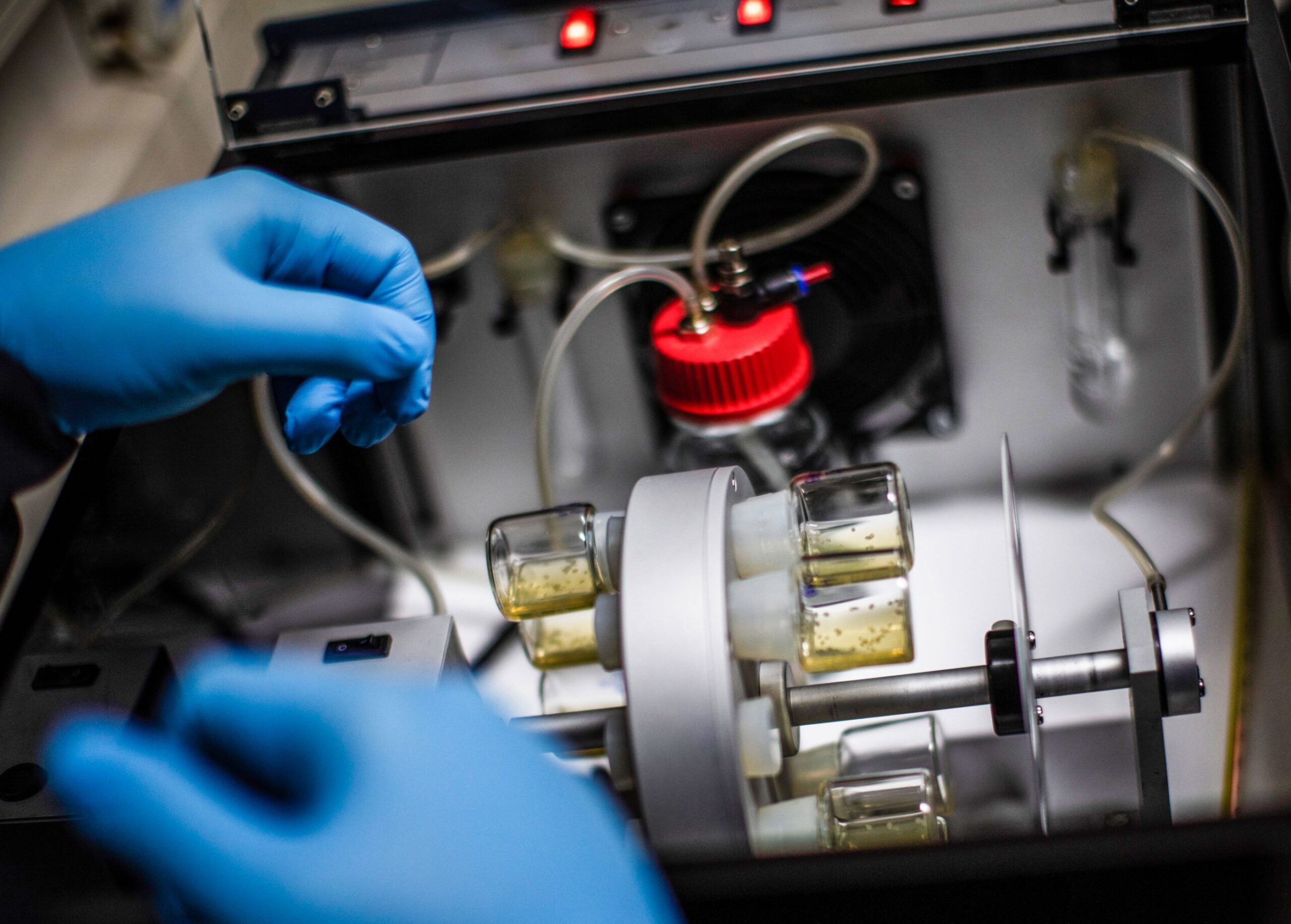
Aguilera Castrejón, who spent eight years at Weizmann contributing to Hanna’s research, is skeptical that the human version of the technology is ready for commercialization. For one thing, it’s inefficient. In every 100 attempts to make a synthetic embryo, the desired structure will form only once or twice. The rest are disorganized blobs—closer to “huevos fritos” than real embryos, he says. “I do think the human embryo model will go further, but it could take years,” he adds.
In Aguilera Castrejón’s view, Hanna is well placed to lead that work. One reason is that Israel offers a relatively permissive environment—and so does Jewish thought. In the Talmud, the embryo is considered “mere water” until the 40th day. Plus, Hanna is already successful. “Some people aren’t allowed to do it. And some people want to do it, but they can’t,” says Aguilera Castrejón. “Jacob wants to make it as realistic as possible and go as far as possible—that is his aim. He’s very ambitious and wants to tackle very big things people don’t dare to do. He really wants to do something big. His main aim is always to grow them as far as you can.”
The first payoff of a technology for mimicking embryos this way is a new view of the unfolding human no one has ever had before. Real human embryos are rarely seen at the early stages, since they’re inside the womb—and at four or five weeks, many people don’t even know they’re pregnant. It’s been a black box. But synthetic models of the embryo can be made in the thousands (depending on the type), studied closely, inspected with modern microscopes, and subjected to dyes and genetic engineering tools, all while they’re still alive. Add a known toxic chemical that causes birth defects, like thalidomide, and you can closely trace the effects. “Since we don’t have a way to peer into the uterus, this allows us to watch things as if they are intrauterine but are not,” says Adashi, the former Brown dean and a fertility doctor.
What’s more, a synthetic embryo may be able to make cells correctly—just as a real one does—and make all types at once, expanding on the limited few that scientists can create from stem cells today. While not all embryonic material is useful to medicine, the blood-forming cells in an embryo are known to be particularly potent. In mice, they can be extracted and multiplied—and if transplanted into a mouse subjected to lethal radiation, they will save it.
Hanna imagines a cancer patient who needs a bone marrow transplant but can’t find a match. Could blood-forming cells be harvested from, say, 100 or 500 embryo-stage clones of that person, providing perfectly matched tissue?
In his cost-benefit analysis, he believes the chance to save lives outweighs the moral risk of growing embryo models for a month, which is about how long it takes for key blood cells to form. At that stage, says Hanna, he thinks “there is still no personification of the embryo” and it’s permissible to use them in research.
Young everything
Hanna cofounded Renewal in 2022 with Omri Amirav-Drory, a venture capitalist whose fund, NFX, raised about $9 million for the company and purchased rights to Weizmann patents. The startup’s idea is to create synthetic embryos from the cells of patients, allowing them to grow for weeks or months to produce what Amirav-Drory calls “perfect cells” for transplant. That is because the synthetic structure, as a clone, would contain “young, genetically identical everything.”
Speaking at an event for tech futurists last year near San Francisco, Amirav-Drory flashed a picture of pregnancy tests used on the synthetic embryos. “We even went to CVS,” he said, “and by day eight it’s already triggering a pregnancy test. So it’s alive.”
Amirav-Drory is a fan of Peter F. Hamilton, the science fiction author whose Commonwealth series features a society where space colonists transfer their minds into cloned bodies, attaining second lives. And he’s pitched Hanna’s technology along related lines, as a new type of longevity medicine based on replacing old cells with young ones. He is convinced Hanna’s work is “magic” that’s sure to win a Nobel.
“The importance of getting rid of the head is all ethical. It just means we can make all these bodies and organ structures without having to cross ethical lines or harm sentient living beings.”
Carsten Charlesworth, researcher, Stanford University
But he knows the startup has both technical and ethical challenges. The technical challenge is that once the synthetic embryos reach a certain size and age, the incubator can’t support them any longer. That’s because they lack a blood supply and need to absorb oxygen and nutrients from their surroundings; they starve once they get too big. One idea being considered is to add a feeding tube, but that involves microsurgery and isn’t easily scalable. The ethical issue is also age related: The more developed they become, the more they will be recognizably human, with the beginnings of organs and small, webbed fingers and toes. “No one has a problem with day 14, but the further we go, the further it looks like a baby, and we get into trouble. So how do we solve that?” Amirav-Drory asked a different audience, in Menlo Park.
The solution, so far, is a neural knockout—genetic changes made to the embryoids so they don’t develop a brain. The group has already tried out the concept on mice, removing a gene called LIM-1. That yielded a headless mouse, which looks a bit like a pink thumb, except with little claws and a tail. Those mice won’t live after birth, but they can develop in the womb. “We got synthetic mouse embryos growing with no head, with no brain,” Amirav-Drory said in Menlo Park. “It’s just to show you where we can go to solve both technical and ethical issues.”
The idea of brain removal is a surprisingly active area of research—suggesting that it’s no sideshow. Working with mice, for example, Nakauchi’s team at Stanford is currently testing several different genetic changes to see if they can consistently yield an animal with no brain or head, but whose other tissues are normal. “The importance of getting rid of the head is all ethical. It just means we can make all these bodies and organ structures without having to cross ethical lines or harm sentient living beings,” says Carsten Charlesworth, a researcher in Nakauchi’s lab. He says the group is working toward a “genetic software package” it can add to mouse embryos to create a “reproducible phenotype.”
It may seem surprising that a technique designed to call forth a living being from stem cells is, simultaneously, being paired with a tactic to diminish that being. To Douglas Kysar, a professor at Yale Law School, that’s part of a broader trend toward what he calls “life that is not life,” which includes innovations like lab-grown meat. In the areas of animal-rights law Kysar studies, commercial biotech projects have begun to explore what he terms “disenhancement” and “disengineering.” That is the use of genetics to reduce the capacity of animals to suffer, feel pain, or have conscious experience at all, typically as part of a program to increase the efficiency and ethics of food production.
For humans, of course, the worry around genetic engineering is usually that it will be used for enhancement—creating a baby with advantages. It’s much harder to think of examples where genetic disenhancements get pointed at the human embryo. John Evans, who co-directs the Institute of Applied Ethics at the University of California, San Diego, told me he can think of one, in literature. Hanna’s plans remind him of Bokanovsky’s Process, the fictional method of producing clones of different intelligence levels in the 1932 novel Brave New World.
That may not be a complete turnoff to investors. Lately, the plots of science fiction dystopias—Jurassic Park, Gattaca—seem to be getting repurposed at hot biotech properties. There’s Colossal, the company that wants to re-create extinct animals. Aguilera Castrejón says he’s already had a high-dollar offer to pack up his academic lab and join a startup company that wants to build an artificial womb. And when Hanna was at the Global Observatory meeting near Boston earlier this year, he was being shadowed by Matt Krisiloff, CEO of the Silicon Valley company Conception, which was set up to try to manufacture human eggs in the lab and has funding from OpenAI leader Sam Altman.
Eggs are another cell type that has proved difficult to generate from a stem cell in the lab. But a growing fetus will form millions of immature egg cells. So just imagine: Someone too old to conceive gives some blood, which is converted into stem cells and then into a clone, from which the fetal gonad is dissected. Maybe the reproductive cells found there could be matured further in the lab. Or maybe those young and perfectly matched ovaries—her ovaries, really, not anyone else’s—could be returned to her body to finish developing. A fertility expert, David Albertini, told me it might just be possible.
During the ethics meeting he traveled to the US in May to attend, Hanna participated on a panel whose topic was “sources of moral authority.” Hanna’s authority comes from the possible benefits the science of synthetic embryos may bring. But he also wields his moral credibility. Early in his remarks, Hanna had framed the whole matter in a way that made worrying about what’s in the petri dish start to sound silly. Wearing a keffiyeh around his shoulders, he said: “I’d like to start and, you know, just remind everyone, unfortunately, that there is a genocide ongoing right now in Gaza, where children are being starved intentionally. And it is relevant, because we’re sitting here and we’re discussing human dignity, we’re discussing the status of an embryo, and we’re discussing the status of a fetus. But what about the life of the children, and adults, and innocent adults? How does it relate?”

